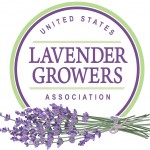Certified Naturally Grown: Is it For You?
by Mike Neustrom
This article takes a look at one of the options available to growers looking to ensure good growing practices. It is also a way of helping your customer become aware of the benefits of eating and growing healthy.
About four to five years ago I was beginning to get questions from customers concerned about what chemicals I used on my fields and in my product line. I decided to look into ways I could help assure my customers I was providing the finest, chemically-free crop and products I could produce. There are other venues to certifying this process. In another article, one of our USLGA members will address becoming ‘Certified Organic’.
I decided to first ascertain just what were my customers concerns and interests about my processes. I first developed a survey I sent out to my customer base asking a series of questions designed to answer those questions. Through this process I learned more and more of my customers were growing more concerned about what was in their products they were using daily. About this time many articles in publications and in the news began discussing agents found in ingredients they wouldn’t be willing to even give to their pets. My approach had always been to stay with vegetable-based ingredients in my products. I only use one mineral (Dead Sea Salt) and two animal product (goat’s milk and honey) in my product line. I also found out to my customer base it wasn’t that important to them if I was certified organic. They were just looking for assurances I was using best practices and few (if any) chemicals on my farm and in products. In other areas of the country, such as farms in California, it has been more important for the Certified Organic program as those customers seem to have more than a passing knowledge of naturally grown foods.
I have never used additives on my fields, nor have I had to use pesticides or herbicides on my farm. Since I started my farm on native prairie grass that had never been farmed, it was much easier than those growing on an existing farm who have used chemicals. Part of the factor involved was I was just too cheap. I also wanted to see just how well lavender would do under extreme heat and cold all on their own. After 12 years I can say they’ve done just fine dealing with a temperature range of 120+ degrees to -20 degrees.
Getting back to assuring my customers, I looked into certification to help market my products with safety as the top priority. I came upon the program called ‘Certified Naturally Grown’ based out of New York, which started in 2002. Their website statement is as follows:
“Certified Naturally Grown (CNG) is a Grassroots Alternative to the USDA’s National Organic Program meant primarily for small farmers distributing through local channels – farmer’s markets, roadside stands, local restaurants, community supported agriculture (CSA) programs and small local grocery stores – the farmers that make up your local landscape!”
The CNG Standards and growing requirements are based on the USDA National Organic Program rules. They are no less strict- in fact CNG farmers are constantly improving their soil and striving to increase the sustainability of their farming operations. The primary difference between Certified Naturally Grown and the USDA Organic program is cost to farmers and paperwork requirements. This was extremely important to me; to reduce my costs and not increase my workload with more regulations while still meeting a set of standards. What also appealed to me was their approach; to wit: “While the new USDA program forbids farm inspectors from making suggestions to improve a farmer’s situation, the Certified Naturally Grown program ENCOURAGES sharing and advice between farmers.
The crux of the Certified Naturally Grown program is the farmer-to-farmer inspection approach. Farmer-inspectors are most familiar with the pest and disease challenges likely to be faced by other farmers using natural methods in their area, so they are uniquely qualified to observe and note whether their neighbors are sticking to the standards. They’re also in a good position to make suggestions on how to deal with these challenges, thereby strengthening the local, natural farming community. Farmer-inspectors fill out a check-sheet inspection form and mail it back to us. It is scanned in and posted on the Internet for anytime public access.“
I liked the cooperative approach. The rule of thumb for CNG is I am supposed to be inspected by another CNG certified farm within a 100 miles of my farm. There wasn’t another one within about 150 miles. After discussing options with Alice Veron, Executive Director of CNG, I contacted our local county extension agent. Their office was more than happy to visit my farm and complete the inspection form required to get and remain certified with the program on an annual basis. This also in turn helped improve my relationship with the county extension folks, and their knowledge about a new burgeoning crop to the area which has helped in my promotion efforts.
I have great pride in being able to point out my certification to visitors and customers alike. I also add the certification to all of my product labels to help assure….. and educate my customers. I can highly recommend the program. You can learn more about the CNG program at CNG – Home Page.
